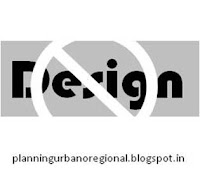Need of assessment without prejudice and unconditioned response.
Architecture and design is awfully judgmental and philosophical stream, its aesthetic and functional perception varies from person to person and it holds different meanings for users of different socio-economic and educational background. For the evolution of architecture it is necessary to assess it from a radically different perspective, questioning every established values and prevalent formulas and benchmarks of good architecture.
Just getting overwhelmed by the magnificent interior of a high-end hotel lobby or much hyped restaurant interior or luxuriously decorated living room of an ultra-rich individual is not a real justice to the architecture and interior design in term of its design assessment and criticism. When someone come across to such wonderful places associated with big names, their immediate response of pleasant surprise in the moment they enter the building makes their design assessment biased with a touch of prejudice. Their analytical mind which is responsible for aesthetic and functional judgment, immediately surrenders to the mesmerizing ambiance of interior. Getting mesmerized by something amazing is a natural response of the human mind, but little more is expected from the architects and designers in terms of their response to immediate environment, surrounding ambiance, assessment in terms of functionality and desired balance between aesthetics and functionality. In that state of amazement they tend to forget the actual purpose of design, and start judging it on its face value.
Lavishness and expensiveness of architectural treatment can be enough to move an average audience or user hence one should be cautious not to get deviated or mesmerized by the shear ambiance of the environment while assessing the functionality and aesthetics of the said design. One has all the right to question the validity and contextuality of design elements and functionality of design even if it is created by established and much celebrated architects and designers. Often people seem to have been caught in the articulated concepts and animated design language while assessing and experiencing architectural spaces and design elements. Their experiences are colored by the aura of authority of established and much hyped architects and designers. Experiences are more or less fabricated and predefined in most of the cases.
One feels that there should be freedom of assessment. There is a need, not only to challenge and break free of established design values but to perceive the design from a clear vision which is beyond the past experiences, which is neither opaque by any prejudice nor conditioned by any socio-economic or regional background of the observer. An assessment based on complete firsthand experience might be a better and sensible way to judge the design.








By Anoop Jha


